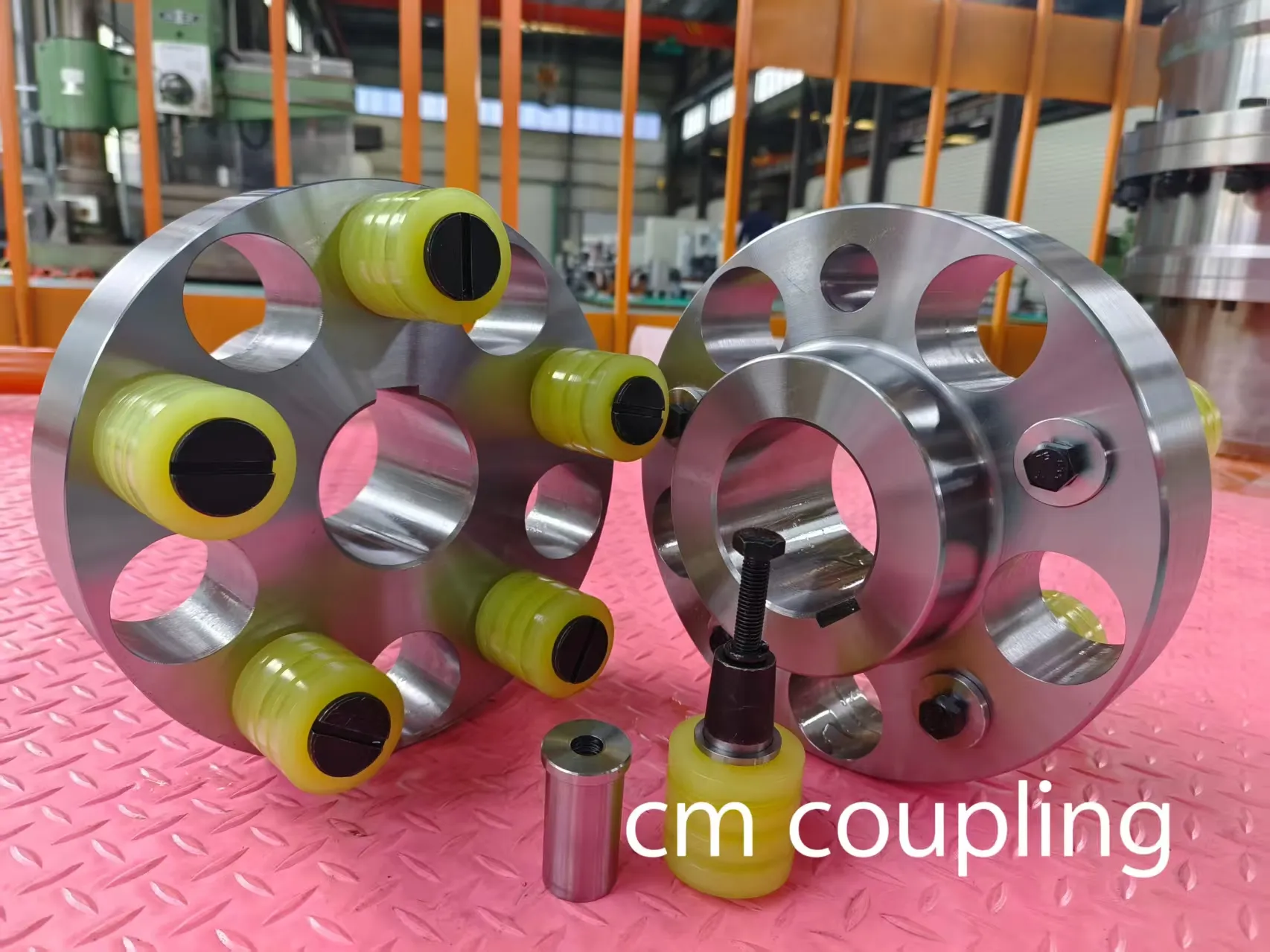Copyright © 2025 Chuangming Coupling (Jiangsu) Co.,Ltd.
Elastic sleeve pin coupling: The "flexible link" for connecting shaft systems
2025-09-05
In mechanical transmission systems, the elastic sleeve pin coupling is a key component for connecting two shafts. With the characteristics of "rigid foundation + flexible buffering", it is widely used in small and medium-sized power transmission scenarios.
Its core structure consists of the active half coupling, the passive half coupling, the elastic sleeve, and the pin: The active half coupling is connected to the power end shaft (such as the motor shaft), the passive half coupling is connected to the load end shaft (such as the pump shaft, fan shaft), and the pin passes through the pin holes of the two halves of the coupling, with an elastic sleeve made of rubber or polyurethane material on the outside. During operation, the power is transmitted through the active half coupling to the pin, and the elastic sleeve forms a flexible contact between the pin and the pin hole of the passive half coupling, achieving torque transmission while absorbing vibrations and compensating for the relative displacement of the two shafts (including axial, radial, and angular deviations.

The significant advantage of this type of coupling lies in its strong buffering and vibration reduction capabilities, which can effectively reduce the impact load when the motor starts and protect subsequent transmission components; moreover, it has a simple structure, low cost, and only requires replacing the worn-out elastic sleeve during maintenance, without the need to disassemble the entire shaft system. However, the elastic sleeve is limited by the material, being unable to withstand high temperatures (typically applicable temperature range -20℃ to 80℃), prone to aging, and has a relatively small torque transmission capacity. Therefore, it is more suitable for use in equipment without severe impacts, such as machine tools, water pumps, fans, compressors, etc., with moderate rotational speeds.
When installing, it is necessary to pay attention to: The coaxiality deviation between the two halves of the coupling needs to be controlled within 0.1mm, and the end face clearance should be maintained at 2 to 6mm; during operation, regular checks should be conducted on whether the elastic sleeve has cracks or hardness attenuation; if any abnormalities are found, it should be replaced in time to avoid direct rigid friction between the pin and the pin hole, which could lead to increased equipment vibration.
In mechanical transmission systems, the elastic sleeve pin coupling is a key component for connecting two shafts. With the characteristics of "rigid foundation + flexible buffering", it is widely used in small and medium-sized power transmission scenarios.
Its core structure consists of the active half coupling, the passive half coupling, the elastic sleeve, and the pin: The active half coupling is connected to the power end shaft (such as the motor shaft), the passive half coupling is connected to the load end shaft (such as the pump shaft, fan shaft), and the pin passes through the pin holes of the two halves of the coupling, with an elastic sleeve made of rubber or polyurethane material on the outside. During operation, the power is transmitted through the active half coupling to the pin, and the elastic sleeve forms a flexible contact between the pin and the pin hole of the passive half coupling, achieving torque transmission while absorbing vibrations and compensating for the relative displacement of the two shafts (including axial, radial, and angular deviations.

The significant advantage of this type of coupling lies in its strong buffering and vibration reduction capabilities, which can effectively reduce the impact load when the motor starts and protect subsequent transmission components; moreover, it has a simple structure, low cost, and only requires replacing the worn-out elastic sleeve during maintenance, without the need to disassemble the entire shaft system. However, the elastic sleeve is limited by the material, being unable to withstand high temperatures (typically applicable temperature range -20℃ to 80℃), prone to aging, and has a relatively small torque transmission capacity. Therefore, it is more suitable for use in equipment without severe impacts, such as machine tools, water pumps, fans, compressors, etc., with moderate rotational speeds.
When installing, it is necessary to pay attention to: The coaxiality deviation between the two halves of the coupling needs to be controlled within 0.1mm, and the end face clearance should be maintained at 2 to 6mm; during operation, regular checks should be conducted on whether the elastic sleeve has cracks or hardness attenuation; if any abnormalities are found, it should be replaced in time to avoid direct rigid friction between the pin and the pin hole, which could lead to increased equipment vibration.